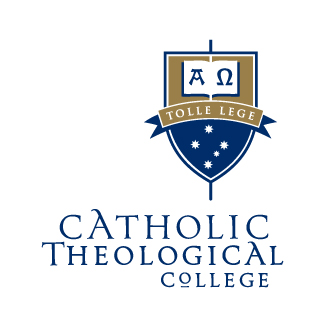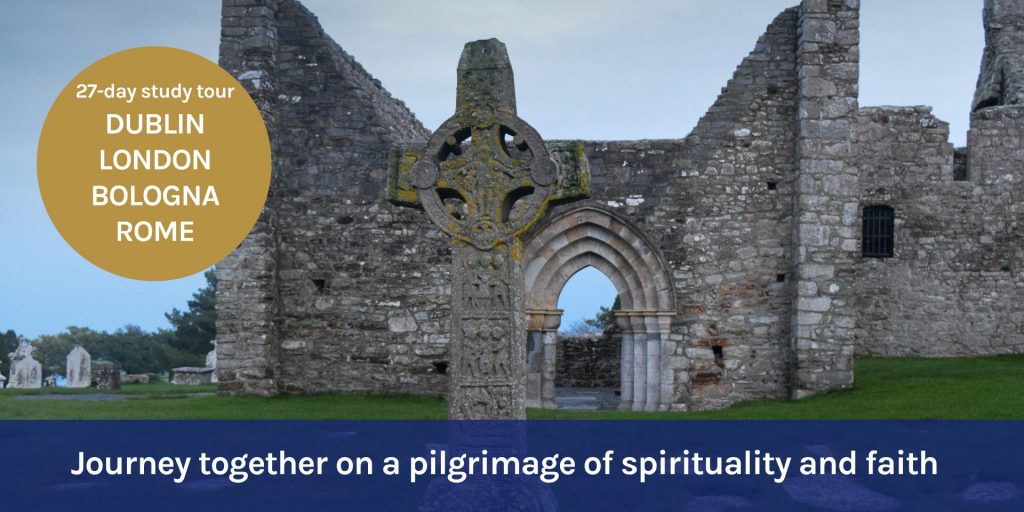This article was published in the April 2019 edition of Tolle Lege, CTC Community news.
In November and December 2018, CTC hosted a study tour of the Biblical Lands. Tour coordinator and co-leader Dr Rosemary Canavan describes the journey.
The anticipation is over. The moment has come. We are boarding the plane from Melbourne bound for Amman, Jordan, via Abu Dhabi. It is a great privilege to lead a study tour, which I do biannually along with my colleague and co-leader Fr Anthony Dean. From the very beginning, I am inspired by the enthusiasm of the travellers, who are a varied group of students and auditors, religious, ordained and lay, retired and employed. In 2019, our 25 travellers started out from a number of destinations including Korea, Norfolk Island, Queensland and Sydney, as well as Melbourne, to meet either on the journey or at Amman. What brings these people together is a yearning to see the places of the Bible and to deepen their faith and understanding by unfolding the Scriptures at significant biblical sites. This is a journey of 30 days, covering biblical sites in Jordan, Israel, Palestine (Bethlehem), Turkey and Greece, with an optional three days in Rome. It is a journey of discovery at so many levels.
Arriving in Amman, it is so good to see our friend and guide Fadi Haddad, who greets us at the airport and whisks us off in our bus to collect other travellers and to get underway with an orientation of Amman and a visit to the Jordan Museum. With the sun going down on the citadel, we gratefully arrive at our haven for the next two days: a resort on the banks of the Dead Sea. The weariness of travel drifts away as we relax, making a late start after breakfast and taking a float in the Dead Sea.
The baptismal site ‘Bethany Beyond the Jordan’ (Al-Maghtas) is a fitting way to immerse ourselves in the journey. This site visibly affects its visitors: quietness and contemplation descend as we walk; wonder arises on our faces as the baptistery is revealed; and a celebration of the Eucharist together at the water’s edge renews our souls. Viewing the Promised Land as Moses did from Mount Nebo takes on a special glow in the setting sun. Our time in Jordan is brief but a fitting beginning to our journey.
We cross into Israel at the northern gate, having visited Gadara with its magnificent panorama across the Galilee. Crossing borders, and changing buses and guides are all part of the journey, reminding us that these are still troubled lands with tensions barely hidden.
In Galilee we stay in a resort on a Kibbutz on the shores of the lake, where we have time to reflect and walk in this place of Jesus and his disciples. Hearing the gospel is never the same after walking, seeing, experiencing these places that are the well-read gospel stories of our lives. Most dramatic is the boat ride we take on the lake. The wind is already up, and the large boat is bumping against the pier in the wash from the other departing boats. Climbing aboard is a faith step in itself! It is customary for the boat to cut its engine for a few minutes to allow passengers a moment of prayerful reflection out on the lake, but this day it is not possible, so we decide to begin reading the account of the storm on the sea (Mark 4:35-41) and immediately it begins to rain. As the words of the gospel are read, we are embraced in our own storm, which dramatically ceases as we reach the shore.
Bethlehem and Jerusalem—such hallowed ground! The early morning walk through the ancient streets to the Holy Sepulchre and Mass at the altar of the crucifixion help us to leave the distractions of the markets behind as we approach the place of the resurrection. A special point of interest is our visit to the City of David, taking us down to the original water source and bringing us out near the Siloam pool. Bethlehem, with its huge Christmas tree in Manger Square, brings our thoughts to the approaching celebration of Christmas. It is, though, in Shepherd’s Field-celebrating Mass, exploring an underground cave church and singing a carol in the chapel-that we capture a sense of the Lukan story and the announcement of the birth of the Messiah to the shepherds.
Istanbul provides an exotic contrast to Jerusalem yet reveals treasures such as the Hagia Sophia and the Chora Church, testament to the growth of Christianity beyond the time of Jesus. Smyrna (modern Izmir), Pergamon and Sardis reveal the churches of Revelation. To walk through Ephesus is to imagine Paul preaching and working, escaping from the silversmith’s riot, making his mark and touching hearts and souls in this city. Before leaving Turkey, we visit an Australian sacred space, Gallipoli, and remember those who died there.
Greece is such a Christian experience, with all the Christmas decorations adorning the villages. It is possible to visualise Paul stepping off his boat at Neapolis (today’s Kavala) and making his way to Philippi. In Thessaloniki, we can only imagine Paul preaching here as the first-century ruins are few and are surrounded by the modern city. Passing through Beroia, Paul is encountered proclaiming the Good News. The visit to Meteora is a mystical interlude, before arriving in Athens and visiting Corinth. Some fellow travellers take leave of us in Athens to return to Australia or to journey on to new destinations. Those remaining take the plane with us to Rome.
We have just three days in Rome, but long enough to visit the forum and the Colosseum, wander the ancient port of Ostia Antica, take in the magnificence of Paul outside the Walls Basilica and plumb the depths of San Clemente to the Mithraeum. Those long days that had spread out ahead of us close over quickly now, and the bonds of faith and friendship built on this journey will be held close at heart as we return to our homes or make our way to other destinations. This sacred journey to our heartland continues to weave Good News and wonder as we return to embrace our families, Christmas and our ongoing call to the live the Word.
Join us for our next tour of the Biblical Lands in November–December 2020.
More information
Catholic Theological College is a college of the University of Divinity from the Catholic tradition, based in Melbourne, Victoria.







Add comment